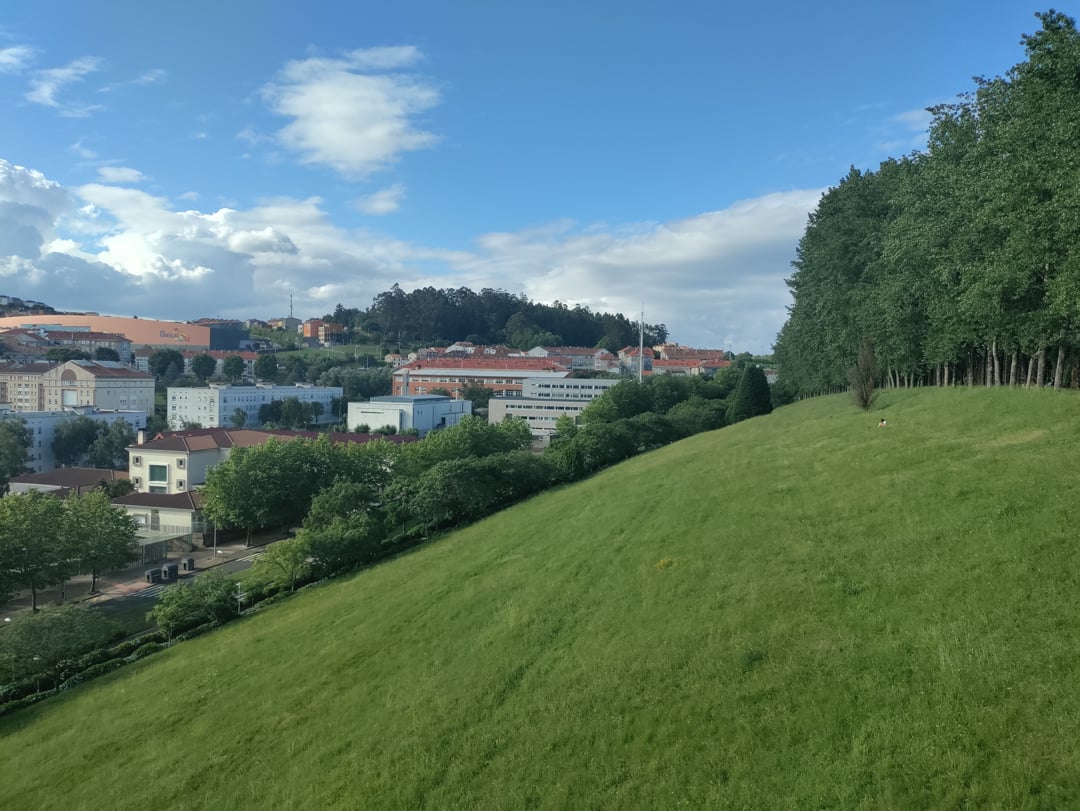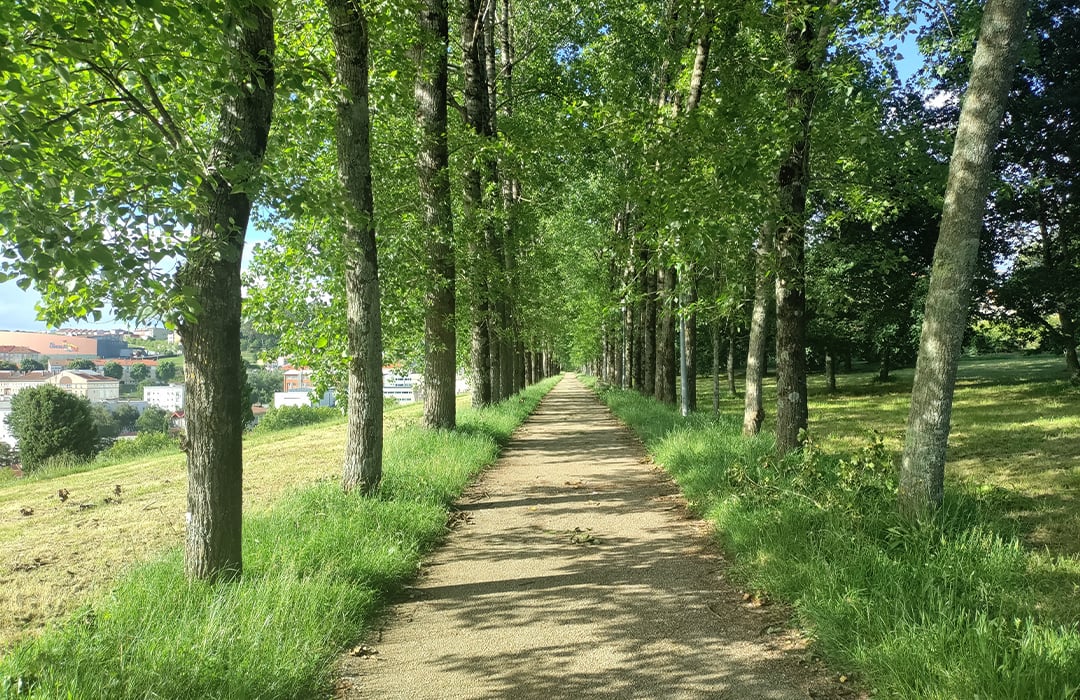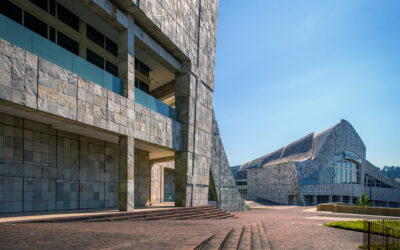The
Charlemagne Park
is part of the residential area of the Polígono das Fontiñas, a project for the expansion of the city of Compostela that was awarded the Philippe Rotthier European architectural award in 2008.
This green space, which occupies a hillside of Monte de San Lázaro, stands out for its ample extension of more than 156,000 square meters. The park is bordered by Avenida de Lugo and Rodríguez de Viguri, the French Way and San Lázaro, the railroad and the Atlantic Highway.
In fact, it is an area closely linked to the phenomenon of the pilgrimage, due to its proximity to the entrance road of the walkers heading to Santiago de Compostela that connects with the enclosure, the Barrio de Concheiros and, later, the Rúa de San Pedro.

The name is a reference to Charles I The Great, also known as Charlemagne, and his supposed link to the Galician capital.
According to legend, when the hermit Paio discovered the tomb of St. James the Apostle in 813, the emperor was aware of the discovery of the tomb after maintaining contact with Alfonso II, so it is believed that he was able to provide funds for the basilica.
In support of the story, the Codex Calixtinus has records of a trip by Charles I to Santiago de Compostela during his war campaigns against Al-Andalus.
At present, the park’s enviable location and the diversity of services available in the surrounding area make the park an outstanding site. These range from sports teams and educational centers to a commercial area and a socio-cultural center.
On the other hand, it has several institutional headquarters in its area of influence, such as the Instituto Galego de Vivenda or the Escola Galega de Administración Pública.
The area is connected to the San Lázaro park, where various administrative buildings, hotels, the stadium or the Congress and Exhibition Center are located, and is completed with large landscaped areas.
When visiting this green area, visitors can contemplate all kinds of tree species, such as plane trees, Portuguese cypresses, camellias, magnolias, Himalayan cedars, thuja trees, birches, olive trees and azaleas.
It also houses some statues and ornamental elements, such as those representing children playing or the Fontiñas monolith.







